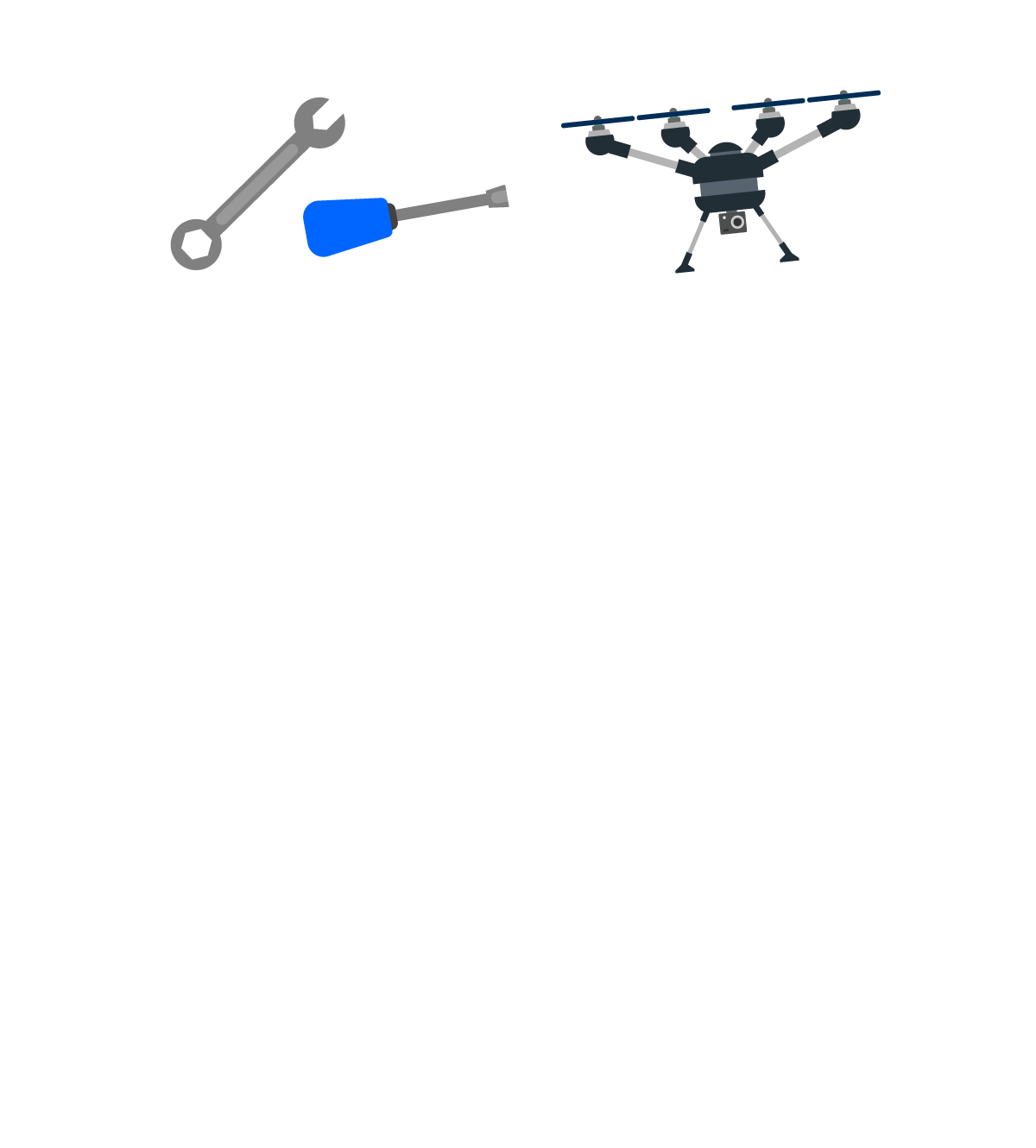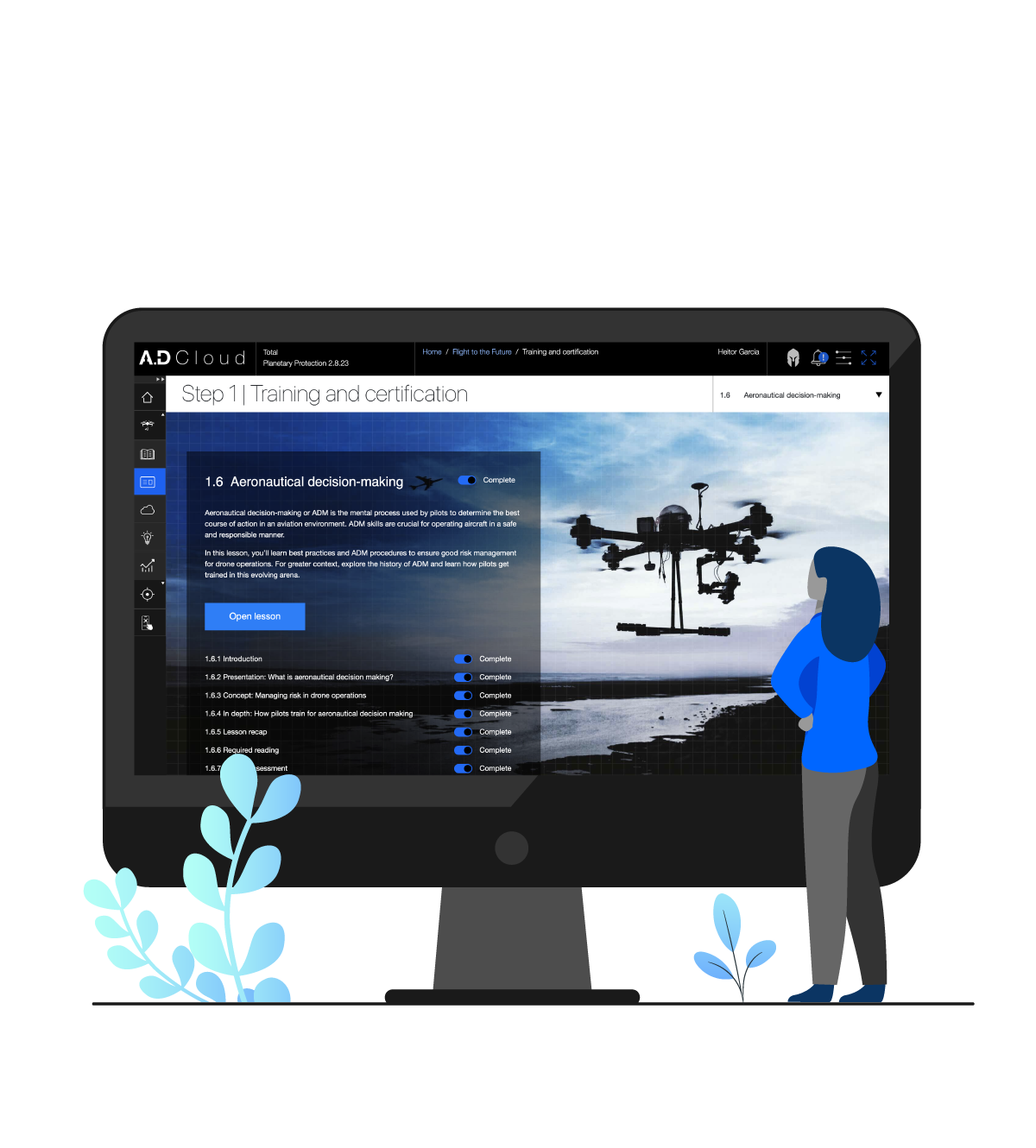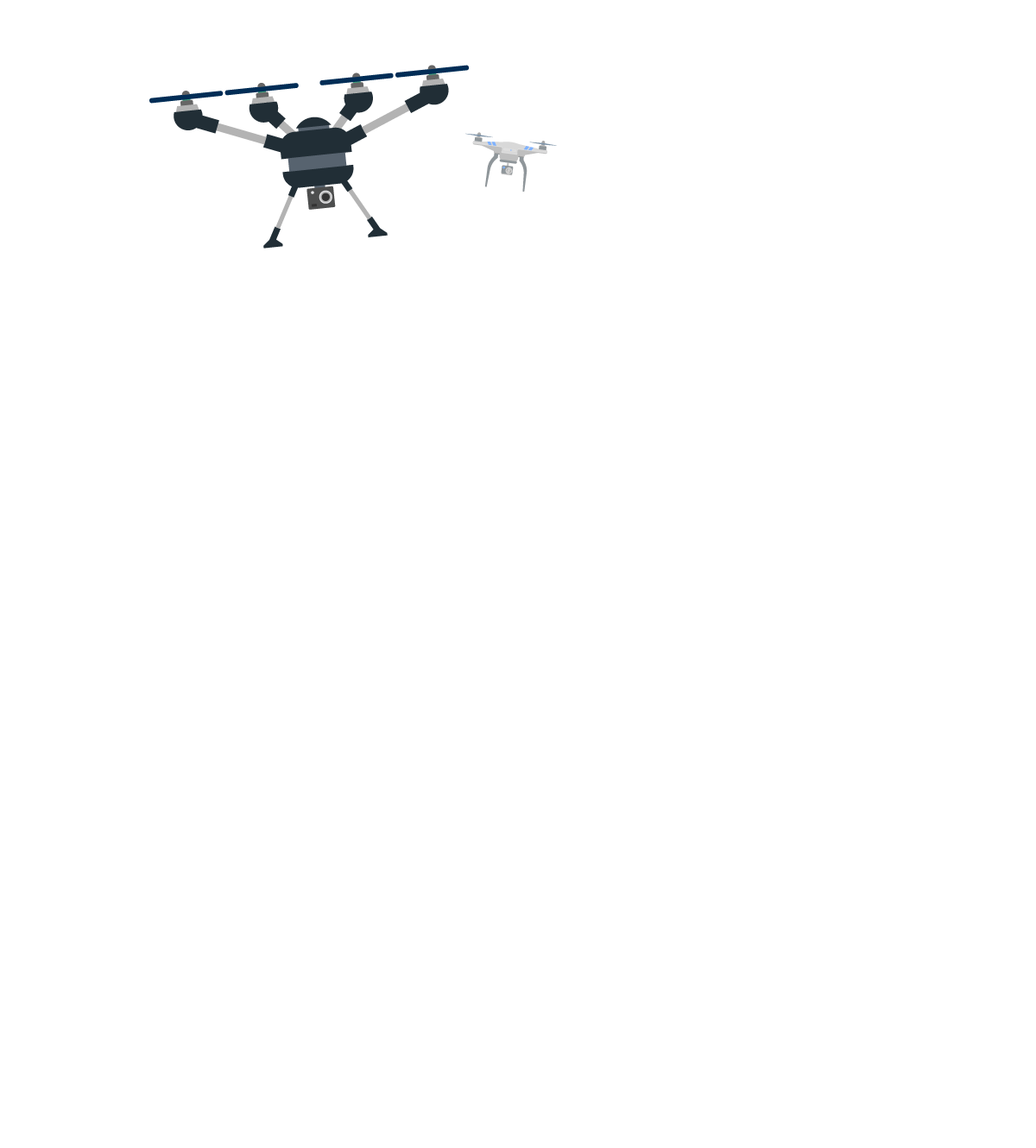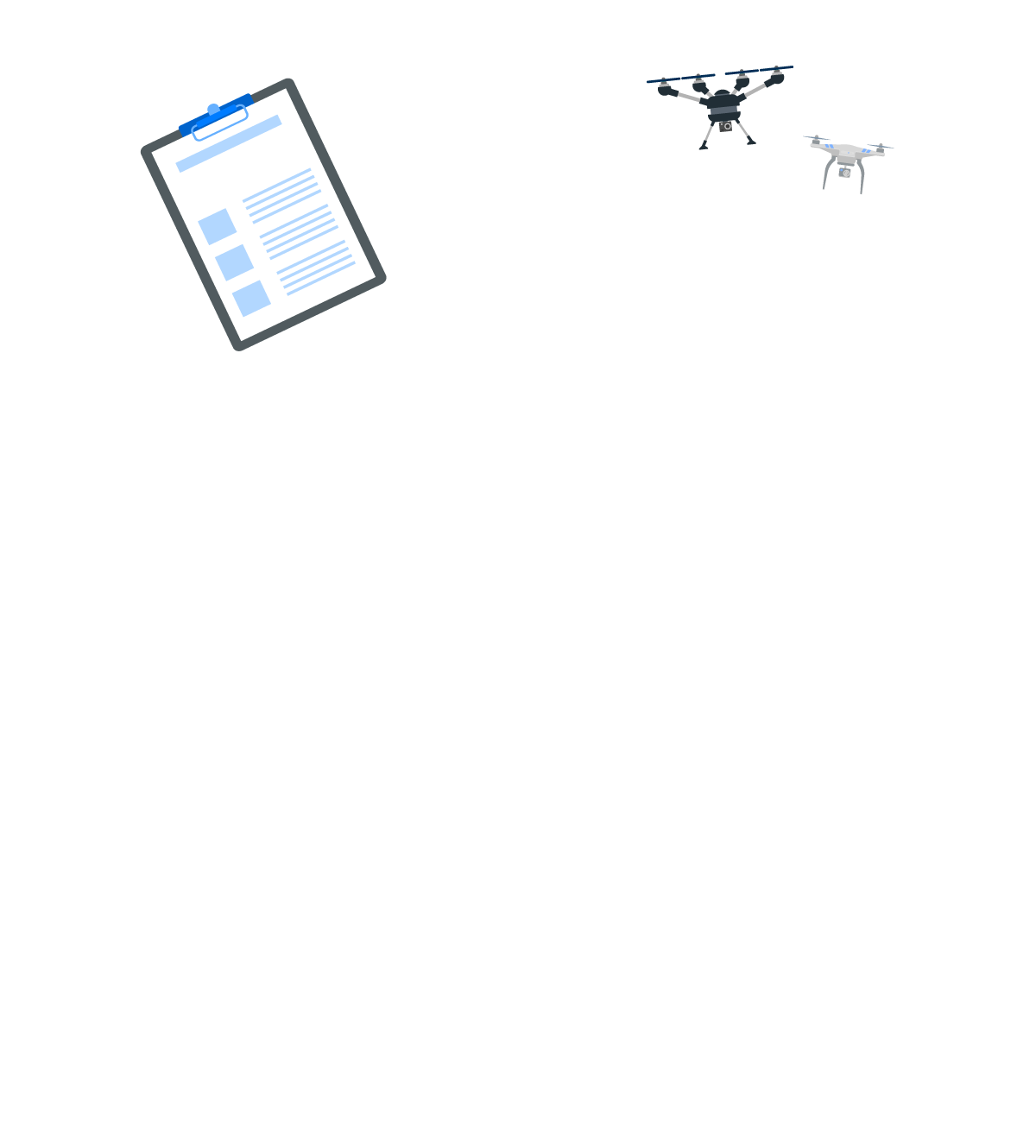
Step 1 | Lesson 1.6
Aeronautical decision making
Aeronautical decision-making or ADM is the mental process used by pilots to determine the best course of action in an aviation environment. ADM skills are crucial for operating aircraft in a safe and responsible manner.
In this lesson, you’ll learn best practices and ADM procedures to ensure good risk management for drone operations. For greater context, explore the history of ADM and learn how pilots get trained in this evolving arena.
Every Flight to the Future lesson has seven segments that take you through a Mind Expanding Journey.
– Introduction
– Presentation
– Concept
– In-depth
– Recap
– Required reading
– Assessment



1.6.1. Introduction
Managing decisions and risk
Throughout the execution of a flight plan, a pilot will make countless decisions. Being able to do this without committing any errors is no small feat.
The science of the human decision-making process is of great interest to the field of aviation, having applications in all areas of operation. Understanding how flight operators should interpret contextual information, and what best practices exist to enhance performance, is an essential step towards entering the profession.
As we have already mentioned, the human factor is the main source of errors in the decision-making process within aerial operations.
Its field of study, also known as human factor technologies, relies on contributions from psychology, engineering, industrial design, statistics, operations research, and anthropometry.
The objective is to comprehend how we humans think and act if faced with a decision-making opportunity, and also by which tools we can seek to improve our overall gains when processing risk.



1.6.2 Presentation
What is aeronautical decision making?
Decision-making capabilities are an essential tool for all pilots. Being able to rapidly identify potential hazards, evaluate the risk factors and then execute an informed decision is a routine part of operating any aircraft.
However, having the ability to rapidly evaluate contextual information and control your decision-making process when facing the endless variety of situations encountered while flying, is extremely challenging.
Understanding the elements related to the human decision-making process, and how a well-trained pilot should take these into consideration whilst in the air, is crucial for the successful mitigation or elimination of risk in flight operations.
Watch the teaser



1.6.3 Concept
Managing risk in drone operations
Hazard is a real or perceived condition, event, or circumstance that a pilot encounters that has the potential to pose risk.
Risk is the quantitative and qualitative component of any potential impact that may arise from feasible hazards.
When a pilot identifies a hazard, they must promptly perform an assessment based upon various factors, as to correctly evaluate the current and future risk factors. Only then can mitigating tactics be employed.
While poor decision-making in everyday life does not always lead to tragedy, the margin for error in aviation is thin.
Watch the teaser



1.6.4 In-depth
How pilots train for aeronautical decision making
A structured approach
Training in various decision-making tools is key towards becoming a skilled pilot. Let's look into five practical frameworks that pilots can use to achieve more efficient and thorough decision-making capabilities.
They are the 5P and 3P models, using PAVE, CARE and TEAM checklists. Then there is also the DECIDE model.
A practical example
To manage risks associated with doubts about the aircraft’s mechanical condition, a pilot may:
Transfer the risk, by using a different airplane. They may eliminate the risk, by canceling the trip. On the other hand, they can accept the risk, and continue with the flight plan.
The pilot can also mitigate the residual risk, by conducting a preflight inspection and reviewing performance.



1.6.5 Recap
Lesson summary
ADM includes a variety of technologies and tools
Human Factors including CRM, SRM and MRM combine with multidisciplinary fields to bring effective tools and strategies together to develop the processes to learn effective skills for desired Aeronautical Decision Making.
A history of implementing these processes has proven that good ADM can be taught and learned to enhance safety, rather than leaving it to individual expertise and chance.
The PAVE checklist
Use this method for improved hazard identification. Here we divide all potential hazards into four categories that influence a pilot’s decision-making process.
The “P” stands for Pilot-in-Command, while “A” stands for aircraft. “V” represents the environment and “E” denotes external pressures. Addressing external pressures is the single-most important key in risk management.



1.6.6 Required reading
Lesson library
Required
– The Art of Aeronautical Decision-Making
– Flight Scenarios for ADM Course
– Weather Decision-Making for GA Pilots
– Assessing the risks of drones and unmanned aerial systems
– Drone Operation Risks and How to Insure Against Them
– FAA summary on Aeronautical Decision Making
For advanced readers
– Safety risk assessment for UAV operation



1.6.7 Assessment
Lesson quiz
Which Aeronautical Decision Making tool utilizes “alcohol” in its elements to remind the pilot if he is within limits of drinking before flying?
– CARE.
– TEAM.
– IMSAFE.
– AAA.
Ten multiple choice questions. An 80% score is needed to advance to the next lesson.


